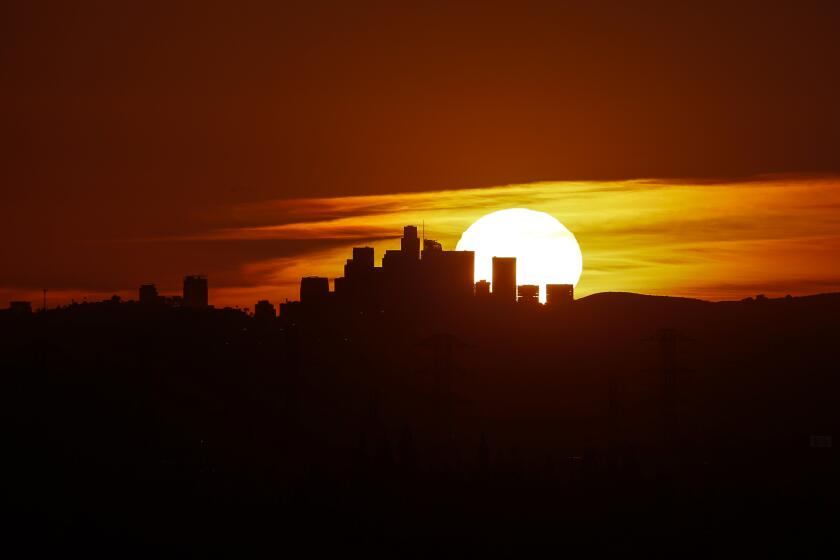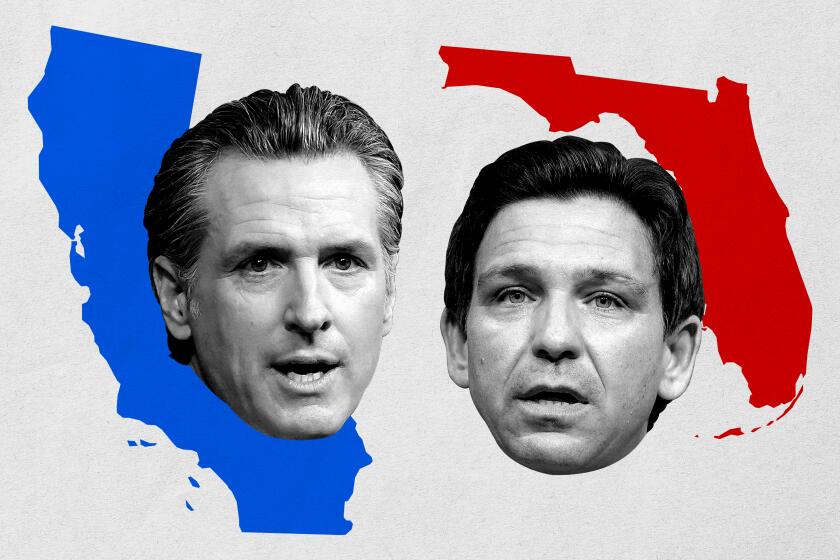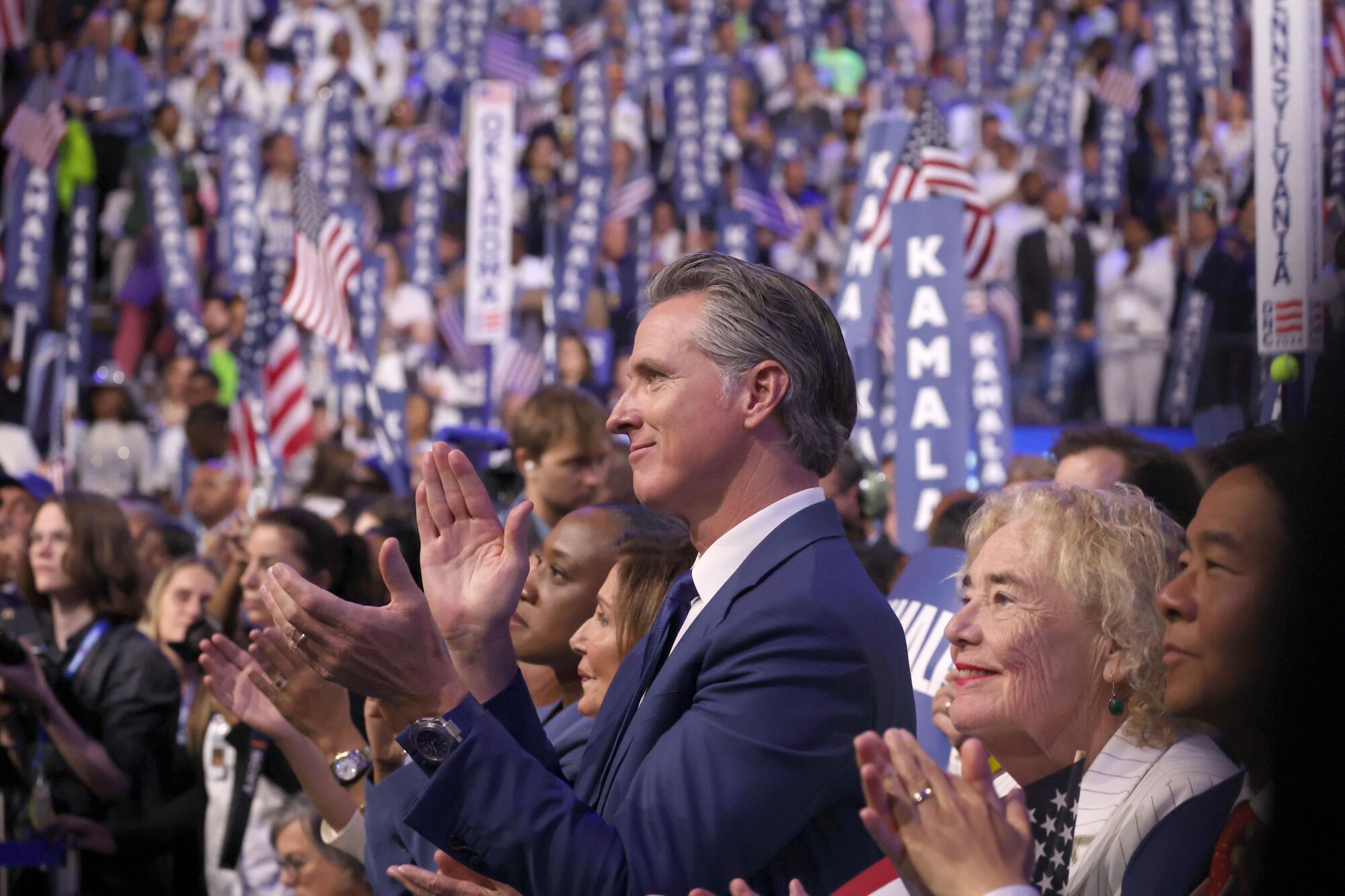
CHICAGO — Gov. Gavin Newsom stood quietly on the sidelines of the packed United Center arena, hands in his suit pockets, as he watched state after state jubilantly declare support for Kamala Harris.
Intentionally away from a swarm of news cameras, Newsom waited to emerge on the floor until it was his nationally televised turn in the spotlight to announce California’s votes for his longtime friend and political ally as the Democratic presidential nominee.
“I’ve got to say, on my life’s bingo card, you can’t make this one up,” Newsom said moments earlier as he made his way through the backstage of the arena down to the hall.
A potent political cocktail of ambition, hard work, smarts and a little luck allowed one Californian to cement her position in the most coveted role in the Democratic party this week, replacing President Biden at the top of the ticket.
The Democratic National Convention also marked the beginning of another star Golden State politician — and presidential contender — finding himself in an unfamiliar position in Harris’ shadow.
Newsom’s presence in Chicago was unusually muted for the liberal leader of the most populous state in America as he tried to navigate his place behind Harris and his unclear role in supporting her campaign.
“He has to make sure that he conducts himself in a manner that recognizes his role and the fact that he’s not the candidate,” said Jennifer Horn, former chair of the New Hampshire Republican Party and now a registered independent who opposes Donald Trump.
“However, at the same time, if he wants to polish that image of himself as being a top-tier potential candidate in the future, then he also has to be a really enthusiastic supporter of Kamala Harris for president, and he can’t try to be clever about it.”
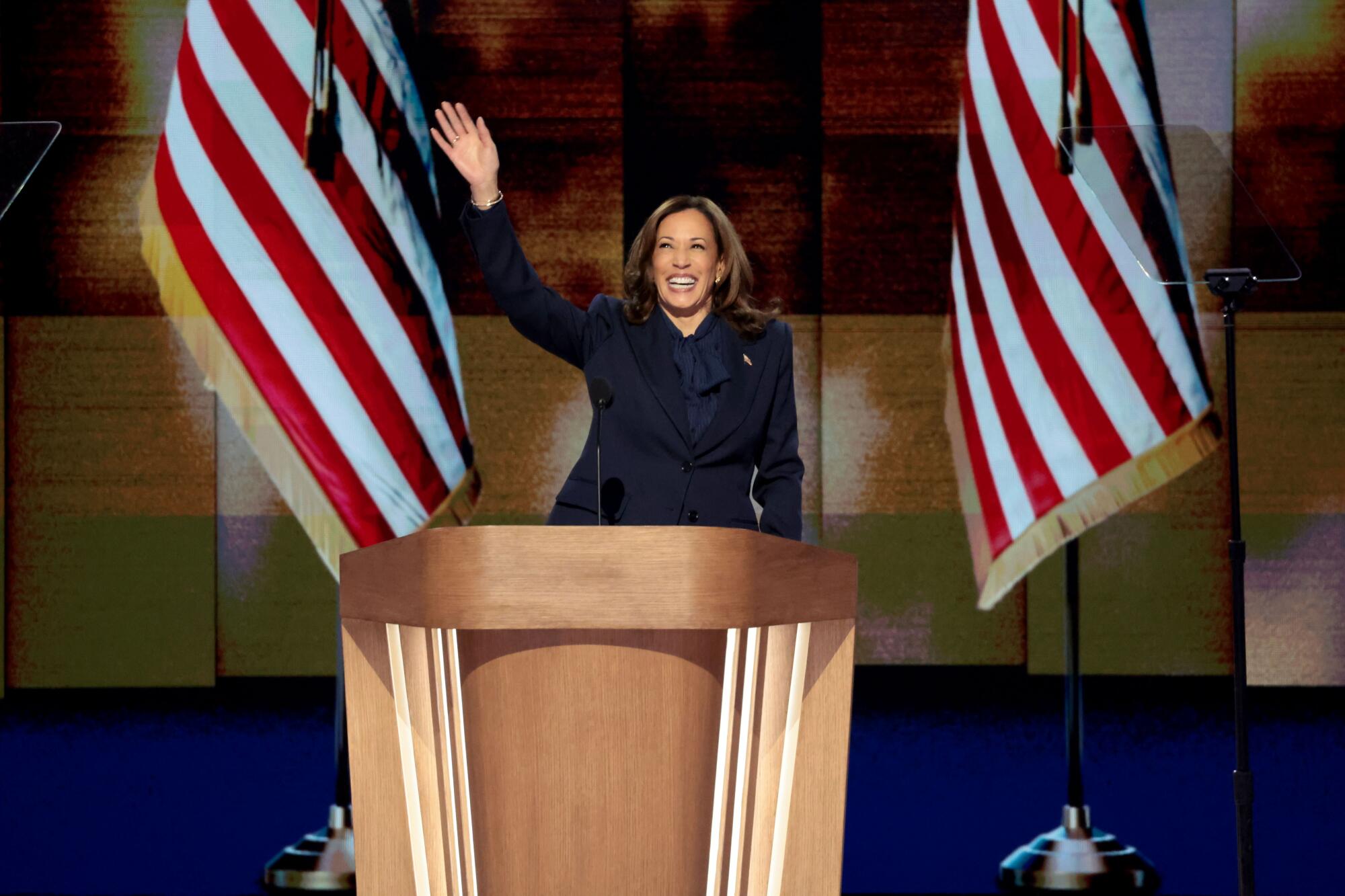
Helpful, not hurtful
In an interview in the arena Thursday, Newsom said he’s ready to jump in but described himself as “a solution in many ways in search of a problem,” given the way surrogates, donors, fundraisers and volunteers have lit up for the Harris campaign in the last three weeks.
He’s waiting for Harris to give him an assignment, but he’s also mindful of the way San Franciscans and Californians are perceived around the nation and how he could affect her campaign.
“I’m deeply situationally aware of that and that’s why I’m not asserting anything,” Newsom said. “I’m happy. I don’t need anything or want anything. I just want to be helpful and not hurtful.”
A new poll shows California’s reputation battered by its high cost of living and by partisanship — half of Republicans say the state isn’t really American
During the convention, Newsom appeared on Fox News and NBC and was interviewed by local news networks at the Harris campaign’s request. He praised Harris in interviews with CNN and some of his home state news outlets, and joined a live Newsmax segment unplanned as he walked past the conservative station’s studio in the arena, but he generally maintained a limited public schedule.
The governor said he had an opportunity to deliver a speech at the convention on Monday, but his flight from California arrived too late. Newsom participated in a school orientation for his kids that morning and made it to the arena just before Biden spoke.
Then he was offered the chance to declare California’s delegates for Harris and close out the roll call Tuesday.
“I said, ‘That’s amazing,’” Newsom said. “So it was the best of all worlds. To be candid with you, that’s kind of a historic moment and that one will be in the scrapbook.”
At least five hot-shot governors from other states — Gretchen Whitmer of Michigan, Josh Shapiro of Pennsylvania, J.B. Pritzker of Illinois, Wes Moore of Maryland and Andy Beshear of Kentucky — and Transportation Secretary Pete Buttigieg spoke on the convention stage and addressed the California delegation at its morning breakfast programs.
Newsom’s wife, First Partner Jennifer Siebel Newsom, also gave a speech to California’s delegates. The governor did not.
Former House Speaker Nancy Pelosi gave him a shout-out onstage at a California delegation party Wednesday night at the House of Blues, but Newsom kept a low profile and remained in the VIP area of the club.
“I think this is really about the national stage and everybody else,” Ariel Kelley, a Healdsburg City Council member, said at one of the California delegation’s breakfast programs. “It’s great to hear from people we don’t usually see much in California because they’re busy taking care of their home turf.”
San Francisco roots
Playing second fiddle to Harris marks a shift in the long-standing political dynamic between the two most prominent figures in their generation of California leaders.
As a flashy and at times unconventional politician, Newsom has often drawn more attention than Harris since their early days in San Francisco.
He also hails from elite California stock: His father, William Newsom, was a lawyer for the Getty oil family and later a state appellate court justice.
A woman of color born to immigrant parents, Harris had to forge her own way into the upper echelon of San Francisco politics. Her Jamaican father, Donald Harris, was an economics professor, and her mother, Shyamala Gopalan, was an India-born cancer researcher.
Harris and Newsom became friends more than two decades ago before either held elected office. They were sworn in on the same day in 2004 — she as San Francisco district attorney and he as mayor.
Harris described that day in her autobiography, “The Truths We Hold”:
“With Gavin Newsom’s swearing-in as mayor the same day as mine, there was a palpable sense in the city that a new chapter was opening for San Francisco politics — and what might be possible for us all.”
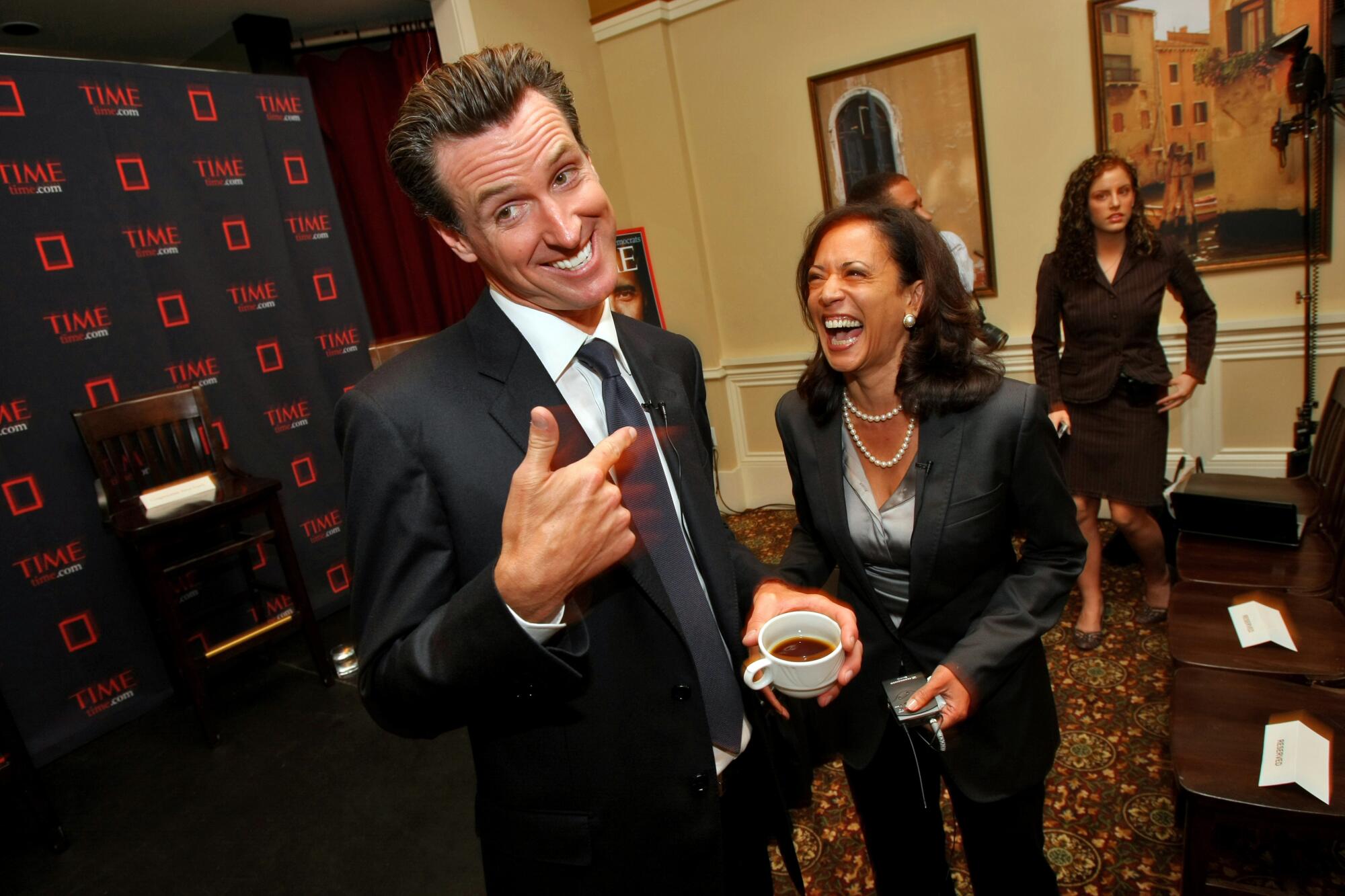
Newsom quickly catapulted into the national spotlight three weeks into his first term when he issued marriage licenses to same-sex couples in defiance of federal law.
Harris also married gay couples during the city’s “Winter of Love.” But her role was eclipsed by his, a dynamic that California political insiders, friends and advisors say continued for much of their political careers as they took parallel paths to the top of state government.
In her nomination acceptance speech at the convention Thursday, Harris said the elections that put her into office were never easy fights and she was “underestimated at every turn.”
Newsom’s confidence was knocked down a peg when he challenged former Gov. Jerry Brown in the 2010 Democratic gubernatorial primary before dropping out and running for lieutenant governor. Harris won election that same year as California attorney general.
Newsom famously detested waiting in the wings behind Brown in a largely ceremonial office with few official duties, but he still managed to attract national attention as a champion of a ballot measure legalizing marijuana, among other political maneuvers.
Harris’ and Newsom’s paths diverged again when she chose to run for U.S. Senate in a 2016 contest to replace former Sen. Barbara Boxer and he announced his candidacy for governor in the 2018 election. Their decisions to seek different offices avoided a potentially bruising battle and an awkward situation for their political advisors, who represented both candidates.
Newsom described a narrative that he and Harris have a “sibling rivalry” as a “stupid construct.” Their careers, he said, never crossed.
“We’ve been sort of on this track, but it was always adjacent,” Newsom said. “The tension was a sort of manifestation of punditry.”
Is the White House still within reach?
Harris was the first to take a shot at the presidency in a failed 2020 bid. Biden’s selection of Harris as his vice president made her an automatic front-runner in talks about top Democrats to succeed him.
But as Biden’s second in command, she was also seen as hamstrung and restricted from getting out in front of him on the campaign trail.
Newsom, on the other hand, shifted to a top surrogate for the president after the 81-year-old commander in chief announced that he would run for reelection.
Though the governor has denied having presidential ambitions, his debate with Florida Gov. Ron DeSantis, frequent interviews on Fox News, appearance at the Republican presidential debate and his own campaign against red state governors stirred speculation that he was eyeing an eventual run.
From their pandemic policies to their relationships with Disney, Ron DeSantis and Gavin Newsom have opposite political ideologies. The debate could help them both.
Biden’s endorsement of Harris this summer and her rise as his successor has not only dimmed talk about Newsom’s presidential prospects, it’s also shifted his advocacy for the Democratic ticket.
At this point, it’s unclear how Harris intends to use Newsom in her campaign. The governor said he spoke with her husband, Doug Emhoff, Harris’ chief of staff and Walz this week offering his help, if desired.
“So, it’s really as needed,” Newsom said. “This race is going to be geographically constrained because at the end of the day it will be swing states that will be determinative and if I can fill a void that others can’t, then I’ll be there.”
As a more moderate politician, Biden was able to tap Newsom to energize more progressive voters. The governor’s red state campaign also allowed him to advocate for Biden in places that were not necessarily at the top of the president’s list.
Harris is politically positioned similar to Newsom.
Darry Sragow, a veteran Democratic strategist, agreed with Newsom’s concerns about people in other states being suspicious of Californians.
“I mean, that’s just the reality,” Sragow said. “So it may be that this is a time for Gavin Newsom to not be overly visible in many of the other 49 states.”
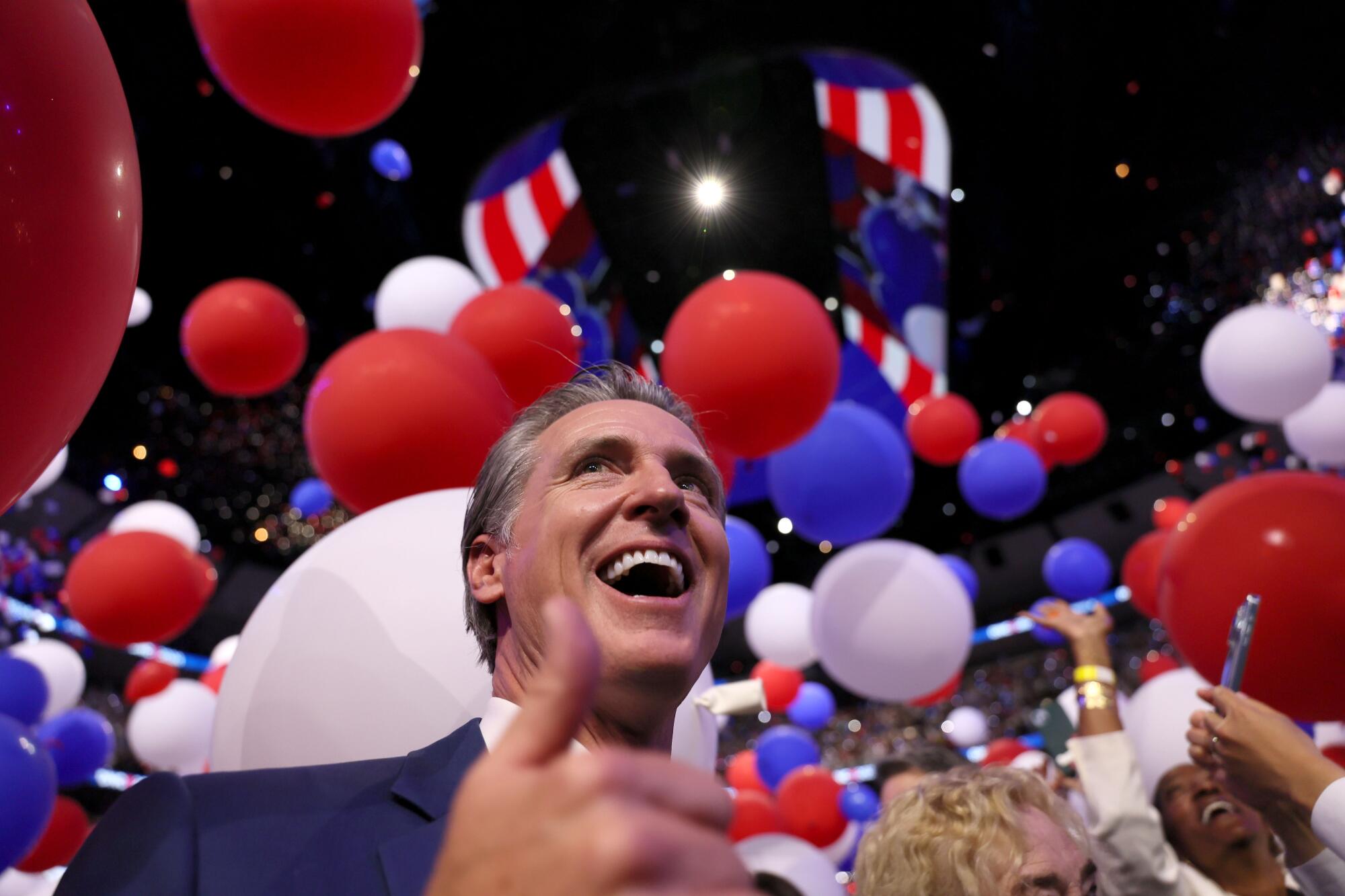
Newsom’s most immediate shot at the presidency largely depends on whether Harris prevails in November.
If Trump wins, the governor can lead the Democratic resistance to a conservative White House until he terms out in 2026 and then launch a bid for president in 2028. If Harris wins, Newsom’s timing could be less ideal for a 2032 run.
Newsom said watching Harris’ rise hasn’t changed his perspective about his own political future. The governor, who has said he wouldn’t run against her for president, has always known he “had a sell-by date.”
“I’m mindful of that,” Newsom said. “I’ve tried to have many identities and purposes in my life. Public service will always be there in many forms and manifestations. Obviously, I’m proud of my entrepreneurial past, present, and that I think will be a big part of my future as well.”
Former California Gov. Gray Davis, who supports Newsom and Harris, said politicians can take only one thing at a time and do their best each day.
“You just can’t say, ‘I want to be president,’” Davis said. “OK, you want to be president, but the path to get there is not in your control and never will be. Fate and timing are everything.”
More to Read
Sign up for Essential California
The most important California stories and recommendations in your inbox every morning.
You may occasionally receive promotional content from the Los Angeles Times.
